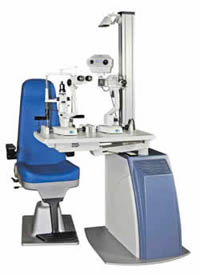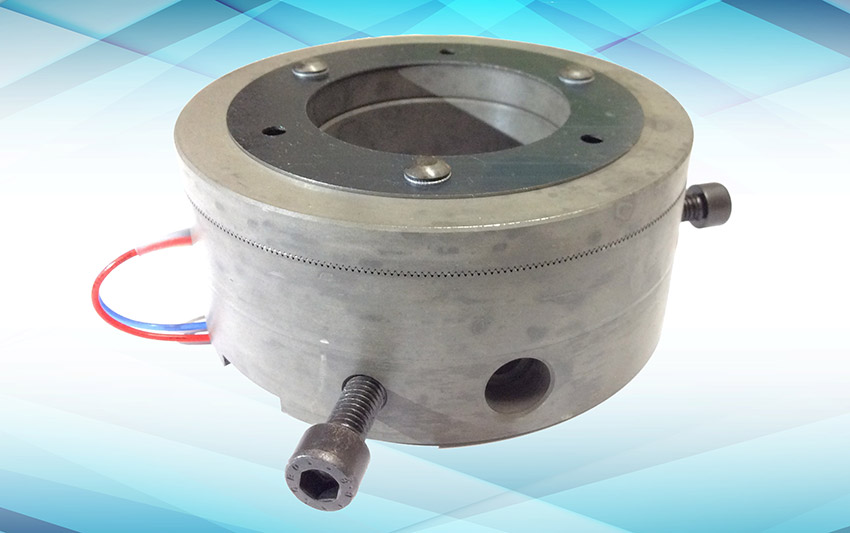Stabilising diagnostic instruments in the ophthalmic sector
Here below is a case history demonstrating how the capacity to design innovative and personalized solutions has been crucial to making these solutions useful and successful in the ophthalmic sector.
Vincenzo Tomasi, founding partner of Telcomec, explains that the requirements of the customer, an international market leader in the production of machines and instruments for the ophthalmic sector, were the following: to find a solution to the stability problem of the multi-station revolving table which stores ophthalmic instruments, which is subject to pushing and pressure by patients during eye-tests; to simplify the overall structure of the machine and, therefore, its assembly; to reduce production costs.

Telcomec was commissioned, therefore, to supply a more compact solution that would offer superior performance in terms of locking features and, therefore, increased stability of the ophthalmic instruments during the patient check-up.
In order to better understand the customer’s request, it is important to describe the locking system technology of the revolving multi-station table, which holds ophthalmic diagnostic instruments. It consisted of a technological solution that employed large electromagnets and several mechanical components to create a successful, yet less than ideal, locking system for the table: this meant that patient check-ups were undertaken using an ophthalmic instrument that wasn’t perfectly stable, which led to the risk of having to repeat the eye test.
Therefore, we designed, together with the customer, a personalized solution, namely an electromagnetic tooth brake without a clearance. This solution gave us the following advantages:
Double the locking performance on the revolving multi-station table which stores diagnostic ophthalmic instruments, making it much more stable and therefore allowing the doctor to get a better reading of the patient’s vision parameters and obviously achieving greater efficiency.
Reduce equipment assembly time and costs, thanks to simpler and fewer locking features, with a resulting increase in profitability.
Increase productivity by reducing the size of the components to be assembled inside the machine, thanks to a unique electromagnetic tooth brake without a clearance that replaces large electromagnets and numerous mechanical components.
Improving the machine’s long-term reliability and therefore reducing maintenance work.
The advantages achieved will affect the customer himself but, naturally, also the doctor who uses the ophthalmic instruments stored in the revolving multi-station table.
Indeed, the doctor will achieve greater efficiency of patient check-ups thanks to a more precise reading of patient vision values, due to the superior stability of the revolving multi-station table that holds ophthalmic instruments; greater efficiency with reduced costs and therefore no need to repeat the eye test as a result of the revolving multi-station table vibrating or moving due to the patient exerting pressure on the ophthalmic instruments; and, finally, increased productivity.
The solution is therefore structured as follows:
- 1 electric coil;
- 1 unit with frontal teeth;
- 1 tooth plate with spring release disc;
- Block torque guaranteed at 200 Nm
The block brake engages, powering the electric coil inside the unit with frontal teeth, which generates a magnetic field and attracts, coupling the frontal teeth of the unit and the tooth plate with the spring disc.

This solution guarantees a blocking torque of 200 Newton Metres which, in practice, translates as the extremely high stability of the central shaft on which the revolving multi-station table holding the ophthalmic instruments is mounted. The rotation and selection of a new station/ophthalmic instrument occurs by means of interrupting the electricity supply from the electric coil and the release of the tooth disc by the spring: this operation is easily carried out by the doctor with the use of a simple remote control.